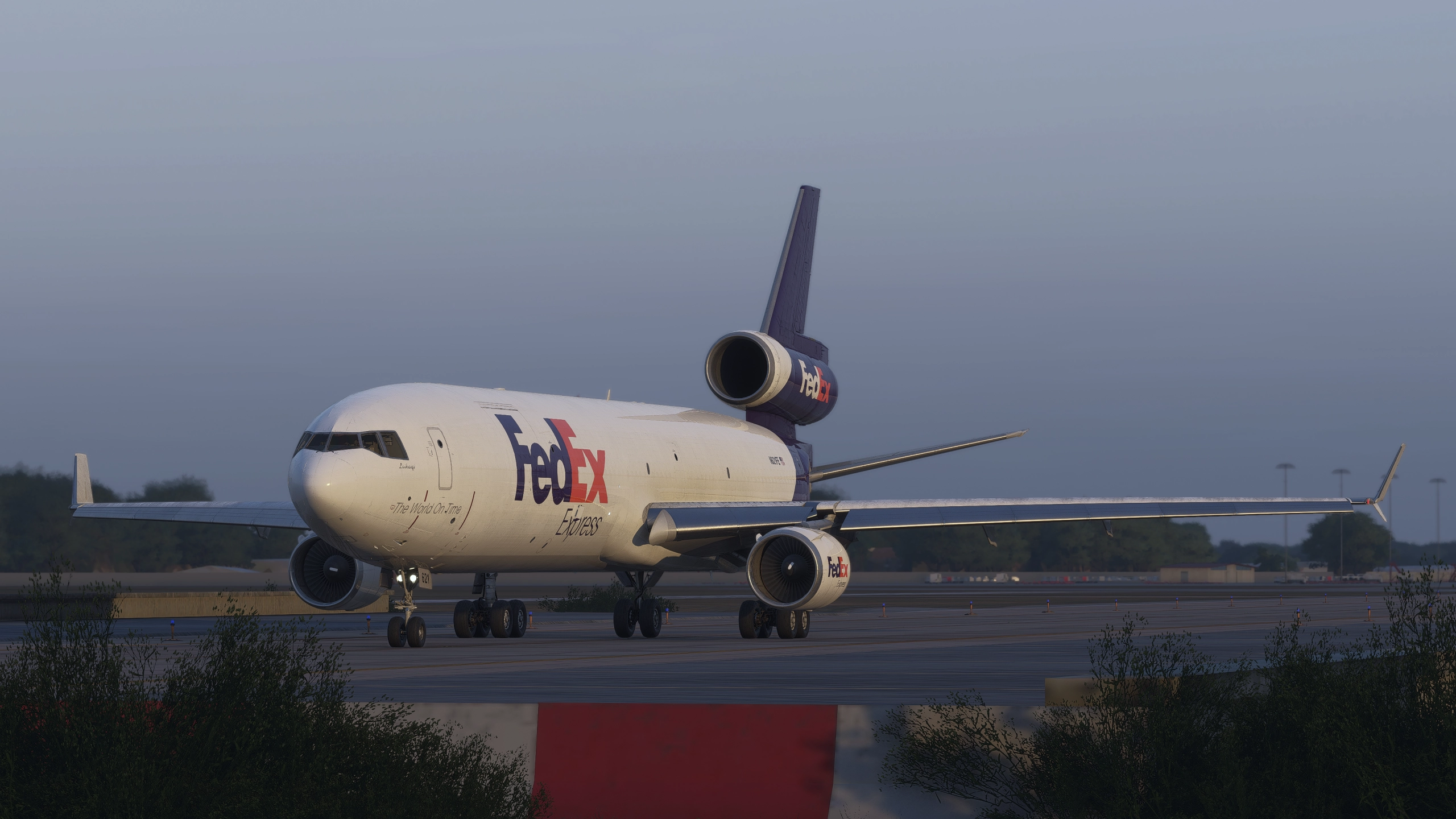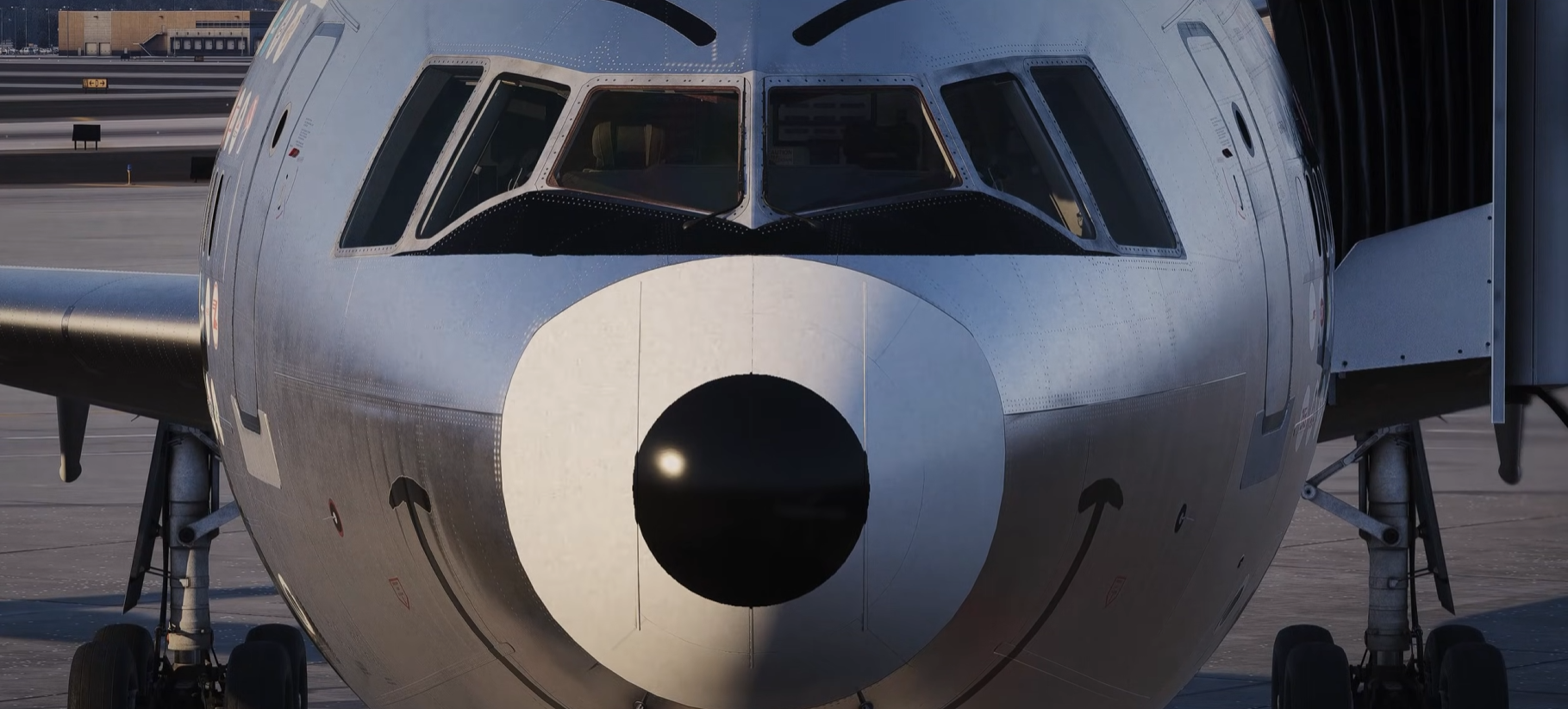Positive Control Network Publishes August 2019 Progress Update
Positive Control Network (POSCON) have published their status update for the month of August via their blog. The update includes the completion of the POSCON voice system, new server-side improvements, previews of their 3D live map, as well as some demonstrations of the Pilot Client and Controller client.

Here's the full changelog from POSCON:
POSCON Voice System -
- Low latency.
- Realistic VHF distortion.
- Line-of-sight simulation including both curvature of the earth and terrain modelling.
- Blocking simulation.
- The ability to add custom transmitter locations for ATC through our website.
- Full integration into all of our clients.
There is an update planned to the voice infrastructure planned for before release, although they've stated this could be postponed until after the network goes public should it delay an on-time release.
Server Improvements -
- The server update rate (15 Hz) is absolutely phenomenal and extremely smooth
- The server can now determine what FIR and sector an airplane is in by analyzing known lateral and vertical airspace stratum. Below are two images showing our custom Discord bot reporting:
- The active aircraft on the server, shown with their Mode-S hexadecimal readouts (first column),
- The FIRs the aircraft are currently in (AOR column); and,
- What FIRs the aircraft are in the vicinity of (APD column).

"We have also extended this capability to sector level granularity. The image below shows what sector the aircraft is currently in and also what sector the aircraft is projected to be in the next 180 seconds based on the current aircraft trajectory."

- Speaking about auto-squawk code assignments, the server can already do this! When you file an IFR flight plan on POSCON, regardless of whether ATC is online or offline, the server automatically sends you a squawk code assignment. This is important so that your flight plan and target are properly correlated because on POSCON, your callsign is not tied to your actual connection.
- Ghost mode has been re-enabled. Earlier this year we disabled our ghost mode code while we worked on other aspects of the server because the feature was interfering with our testing. I am pleased to announce that we have finished those peripheral updates and have re-enabled ghost mode. Ghost mode allows members to remain connected and enjoy the server, while not being a bother to other users.
- Added runway definitions and buffer zones to the server so that when an aircraft spawns to a runway, instead of interfering with traffic, they are automatically ghosted. This server functionality can also later be used for Runway Safety Area (RSA) alerts in the Radar Client.
- In addition to automatically ghosting for spawning on a runway, the server will also automatically ghost aircraft that slew or that connect in the vicinity of another aircraft (e.g. at the same gate as someone already connected).

Server Infrastructure -
POSCON are utilizing the Google Cloud Platform for their infrastructure. Some features of their server infrastructure include:
- Automatic server selection and negotiation.
- Memory-only flight servers (no need to read from disk).
- Multi-gigabit network uplinks per server.
- RAM-based databases for our core services.

Pilot Clients -
- X-Plane Pilot Client was recently updated with better model matching logic
- Added a new ground clamping algorithm. As a pilot approaches or departs from the ground, the client will now evaluate the terrain underneath the aircraft and intelligently chose from one of two methods to display an aircraft in your sim. This will prevent models from making unrealistic movements during the takeoff or landing phase of flight.
- Works very well when you are flying with people using different sims and/or terrain meshes
- We will ensure feature parity, so the FSX/P3D client will soon have the same features that have been added to the X-Plane client
.png)
Website (HQ, Headquarters) Updates -
Some additional features of the HQ include:
- The ability to view your profile, statistics, and change account preferences.
- View training documentation and modules.
- Submit support requests.
- View upcoming events and bookings.
- Browse available Discord servers.
- Schedule ATC sessions.
- Submit airline and aircraft ICAO codes to be approved for inclusion in the global database.
- Live Map (consists of a globe, continents, and FIR boundaries) - Currently it displays airspace and aircraft with the ability to view activity in a 3D perspective. We have included a live weather radar on this map as well that covers most major areas around the world.

By clicking on an aircraft on the map, a sidebar appears which displays some basic flight data and a series of options to choose from including:
- "Leave Feedback"
- "Report Issue" - in other networks, this is the same as the "Wallop" command.
- "Message" - this is restricted to Moderators only.
Additionally POSCON's maps are from OpenStreetMap, allowing for as much customization detailing as the user desires.

Pilot Client Web UI (Part of HQ) -
According to POSCON, the Pilot Client Web UI is already capable of:
- Changing VHF radio frequencies in your sim.
- Changing squawk code, transponder mode, and identing.
- Changing the active radio transmitter and receiver in your sim.
- Requesting and displaying weather reports (METARs, TAFs, etc.).
- Changing your connection mode (ghost or live).
- Disconnecting from the network.
- Sending PIREPs to the server.
- Communicating with Moderators.
"We are currently working on implementing CPDLC via the Web UI. This will be the only way users are able to use text to communicate with ATC."

Radar Client -
"One of the unique things about our Radar Client is the way you log in and choose what position you are going to control."

Here's the login process for the radar client:
- The first step is to pick the authority in which you desire to work in. In this case "FAA", which is the USA.
- Then pick the enroute facility. In this case "ZNY", which is New York ARTCC.
- Then pick the sub-facility. In this case "N90", which is New York TRACON (Apporach/Departure).
- Then pick the sub-facility area. In this case "JFK", which is of course Kennedy International Airport.
- Then pick the sector or position. In this case "2G", which is a sector of the Kennedy Area.
- Pick the configuration. In this case I picked "Default".
After clicking "Login", the server automatically downloads all the proper sector and voice communication data. Why is this important? It makes the setup process extremely seamless.

POSCON also showcased their VSCS (Voice Switching and Control System) in their blog post.
"The VSCS panel data is automatically populated from the server based on the position you select at login. No extra configuration is required other than selecting which transmitters you want to activate. In the example below, we have set up a single frequency with multiple transmitter locations."

POSCON's Radar Client allows for user adjustment of target updating, as different airports have different refresh rates. Also provided by POSCON was a screenshot of their WX and ALTIM set panels.

Threshold will keep you in the loop for when the next POSCON update comes around. To view Positive Control Network's original blog post, click here. To view previous articles about Positive Control Network, click here.
Share this page
COMMENT ADVISORY:
Threshold encourages informed discussion and debate - though this can only happen if all commenters remain civil when voicing their opinions.




.webp)
.webp)






